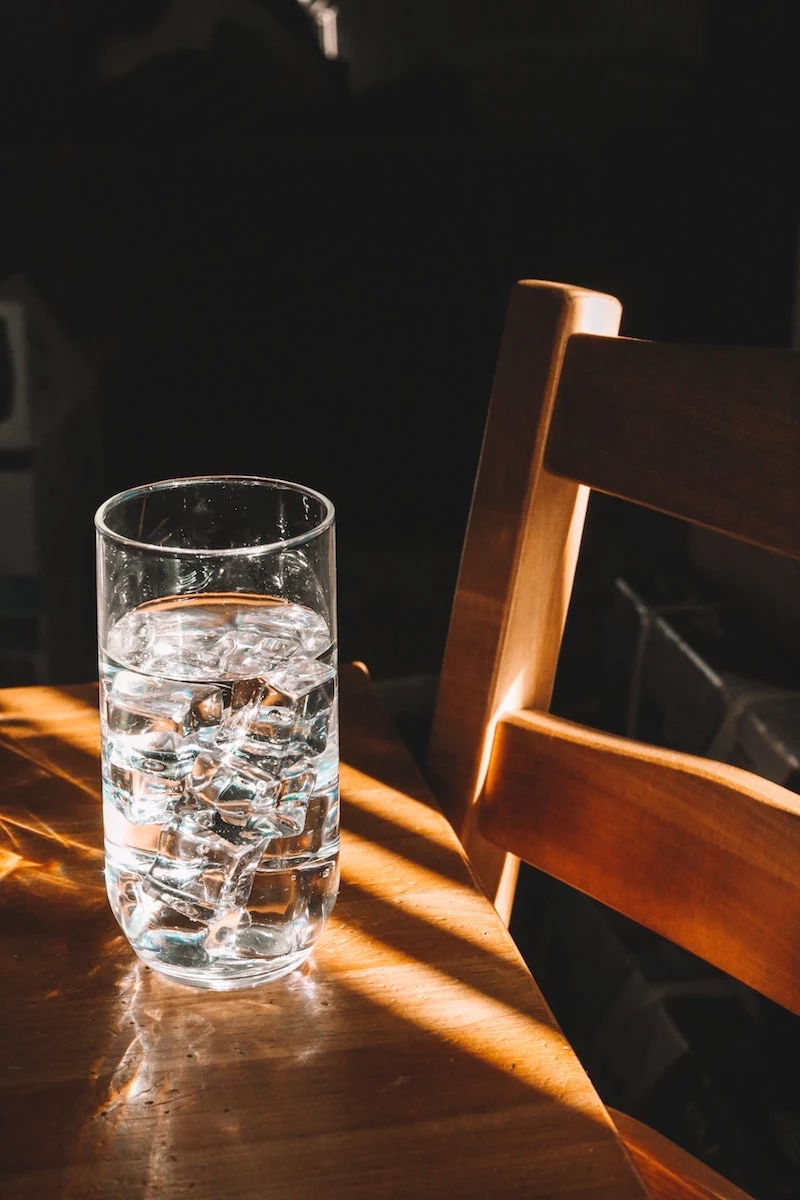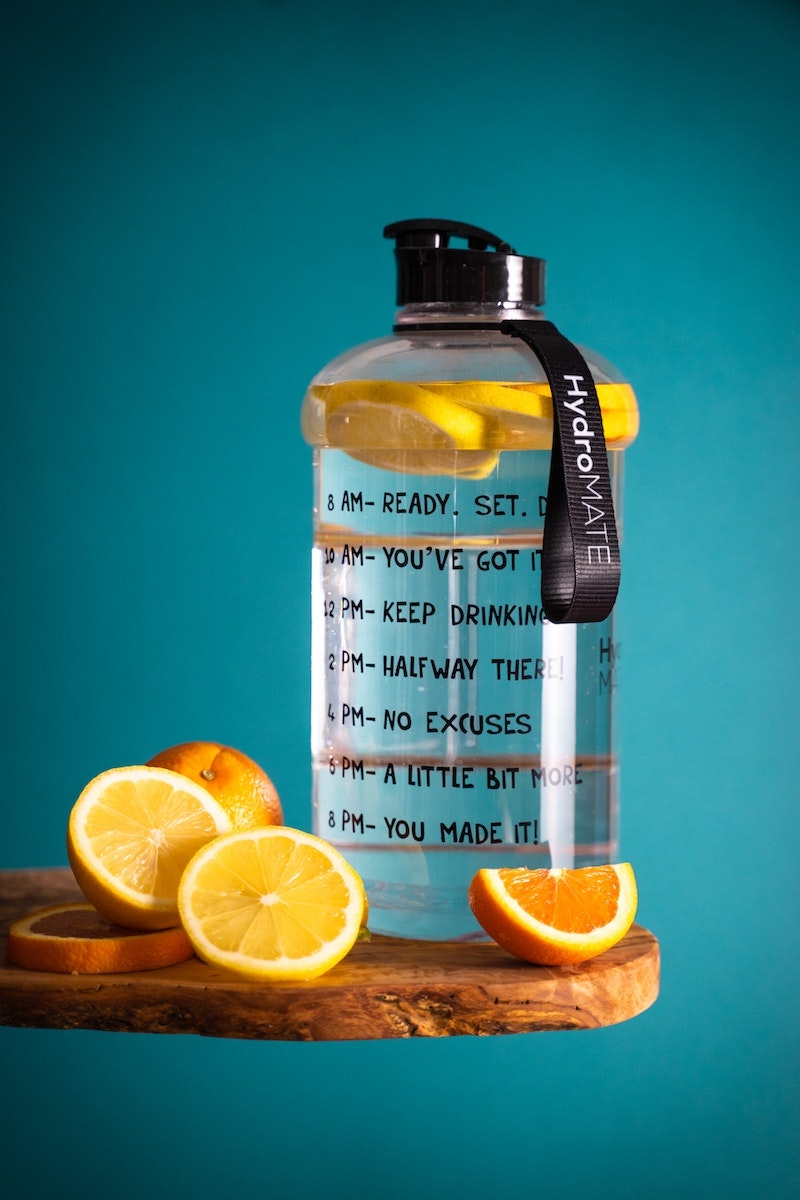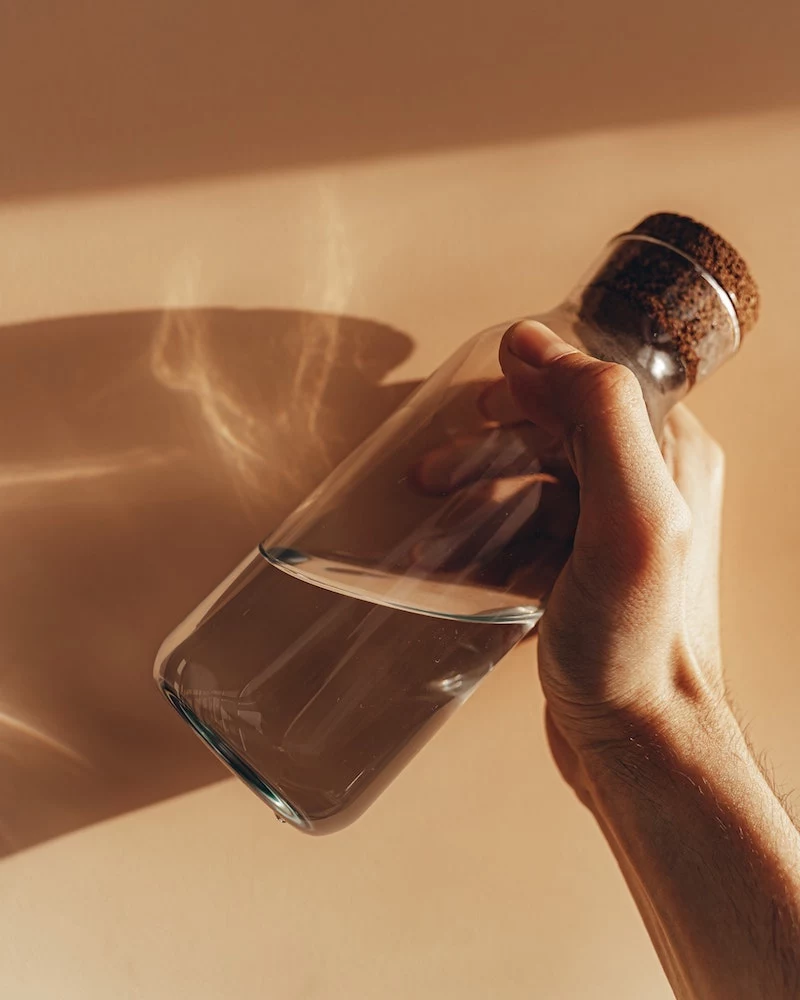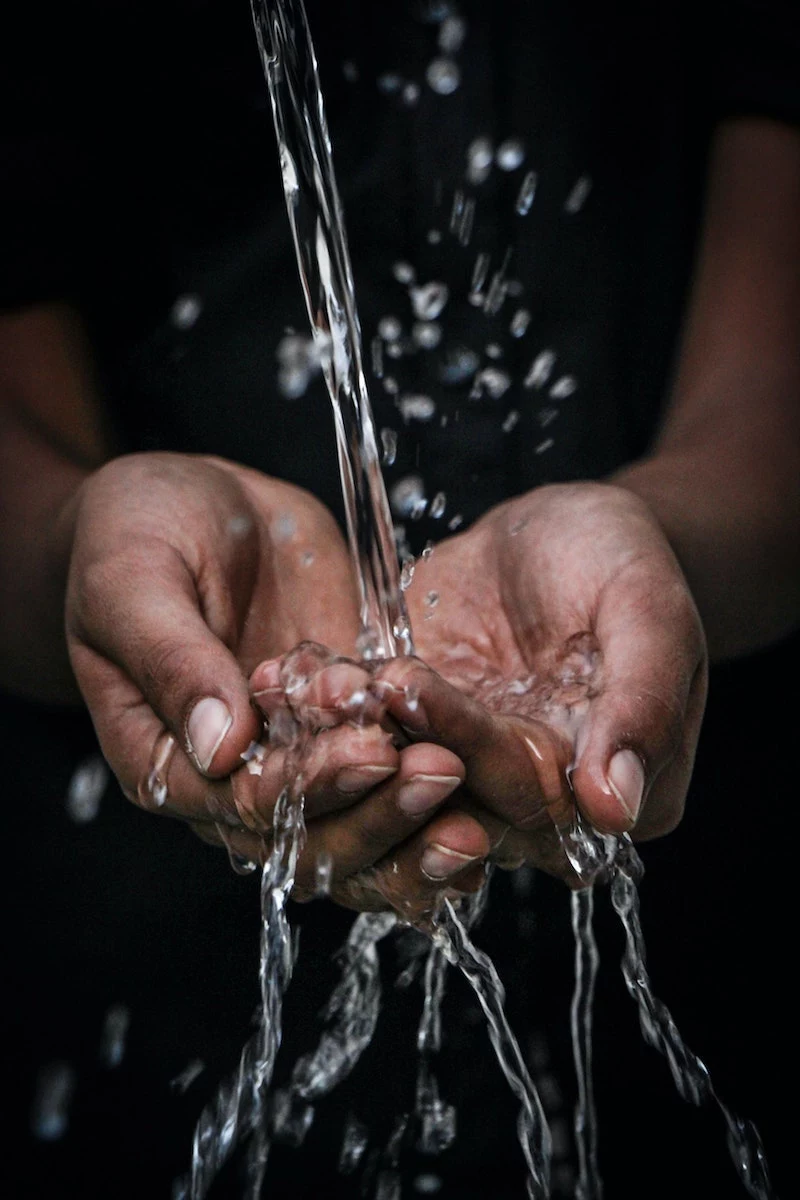What’s Actually In Your Tap Water? (And What to Do About It)
I’ve spent the better part of my career in and around water systems. I’m talking about standing inside massive concrete tanks at treatment plants, helping homeowners figure out why their sink smells funny, and teaching rookies how to make sense of those dense water quality reports. The biggest thing I’ve learned? Most of us know surprisingly little about the water that flows so freely from our taps. It’s a modern miracle, honestly, but we either take it for granted or fear it because we don’t understand it.
In this article
So many people immediately reach for bottled water, thinking it’s the gold standard for purity. But that’s not always the full story. My goal here isn’t to tell you what to drink. It’s to pull back the curtain and share what I’ve learned from being on the inside. We’ll walk through your water’s journey, see how it’s kept safe, and get into some practical fixes for common problems. By the end, you’ll be able to make a smart choice for you and your family, no marketing hype needed.

From River to Faucet: The Epic Journey of Your Water
First off, your tap water doesn’t just appear out of thin air. It starts a long, carefully controlled trip from a natural source. Knowing this process is the first step to trusting what’s in your glass.
Most city water comes from one of two places: surface water or groundwater.
- Surface water is exactly what it sounds like—rivers, lakes, and reservoirs. It’s the go-to for many large urban areas.
- Groundwater is water held in natural underground layers of rock and soil called aquifers. This is more common for smaller towns and, importantly, private wells.
A quick but critical aside: If your home uses a private well, you are your own water utility manager. The journey I’m about to describe for city water doesn’t happen for you automatically. You are responsible for testing and treating your own water. It’s a big responsibility, but a manageable one!

For everyone else, the source of your water dictates the first treatment steps. River water, for instance, often carries more sediment and gunk, so it needs a more heavy-duty cleaning process than water from a deep, protected aquifer.
Step 1: Getting the Big Stuff Out (Coagulation & Flocculation)
When the raw water arrives at a treatment plant, the first job is to get rid of all the suspended dirt. You can’t just run it through a simple filter because the particles are way too small. So, the pros add special chemicals called coagulants to the water. These have a positive charge that attracts all the negatively charged little bits of dirt and grime. Once neutralized, they start clumping together into bigger, heavier chunks called “floc.” It’s a bit like making cheese curds, but for dirt.
Step 2: Letting It Settle (Sedimentation)
Next, the water flows into huge, calm tanks where it just… sits. For hours. Because those floc particles are now heavy, they slowly sink to the bottom, forming a layer of sludge. This super simple, gravity-powered step is incredibly effective—it can clear up over 90% of the water’s cloudiness before it even sees a filter.

Step 3: The Big Filter (Filtration)
The clearer water from the top then moves on to the main filters. And we’re not talking about the little cartridge in your fridge pitcher. These are massive beds made of sand, gravel, and sometimes other materials like crushed anthracite. As water trickles down through these layers, it gets polished, removing even tinier particles, including many bacteria and protozoa that can make you sick.
Step 4: The Safety Net (Disinfection)
Filtration gets most of the nasty stuff, but the final, crucial step is disinfection. This is what kills any remaining pathogens and, just as importantly, provides a protective shield that keeps the water safe on its long journey through miles of pipes to your home.
The two main players here are Chlorine and Chloramine. Chlorine is the classic choice—cheap, effective, and trusted for over a century. Its downside? It can create some byproducts when it mixes with organic matter and has that distinct “pool” smell. Chloramine, a mix of chlorine and ammonia, is more stable, creates fewer of those regulated byproducts, and has a milder taste. Heads up! If you have a fish tank or use a home dialysis machine, you absolutely must filter out chloramine, as it’s harmful in those specific cases.

Oh yeah, some communities also add fluoride to the water. This is a public health measure to help prevent tooth decay, but the decision is made at the local level, which is why your town might do it and the next town over doesn’t.
How Do We Know It’s Safe? Your Right to Know
This whole process isn’t just based on good faith; it’s governed by strict federal law. A landmark piece of legislation gives the Environmental Protection Agency (EPA) the authority to set national safety standards for over 90 different contaminants. Your local water utility is legally required to meet these standards, period.
And they test constantly. I’ve been in utility labs where techs work around the clock, checking everything from chlorine levels to pH. They test at the plant and all over town, sometimes right in your neighborhood.
The Most Important Document You’ve Probably Never Read
The best tool you have is your Consumer Confidence Report (CCR). Every community water system has to give one to its customers each year. You can usually find it by Googling “[Your Town Name] Consumer Confidence Report.” It can look intimidating, but here’s the secret: you only need to look at a few columns. Find the one labeled “MCL” (Maximum Contaminant Level)—that’s the legal limit. Then look for the column labeled “Your Water” or “Level Detected.” Just compare those two numbers. In most cases, you’ll find the level in your water is way, way below the legal limit. If it’s ever close or over, the utility must explain why and what they’re doing about it.

By the way, you might be hearing a lot about things like PFAS or “forever chemicals” and microplastics. These are what we in the industry call “emerging contaminants.” The science on how to test for them and what levels are safe is still developing, so the regulations are playing catch-up. They are on everyone’s radar, but they may not appear on your current CCR until national standards are set.
What About Bottled Water?
Let’s be real, the perception is that bottled water is safer. But here’s an insider fact: tap water is regulated by the EPA, while bottled water is handled by the FDA. In many ways, the EPA’s rules are actually more stringent. For instance, public water systems must use accredited labs and make all their test results public in that CCR we just talked about. Bottled water companies don’t have to share their results with you.
And where does it come from? While some is from pristine springs, a huge chunk of it—some estimates say up to 45%—is just filtered municipal water. You’re often paying a massive markup for something very similar to what’s already in your pipes.

Let’s talk money. Tap water costs less than a penny a gallon. A single bottle of water can be a buck or two. A family that only drinks bottled water can easily spend over $1,000 a year more than a family drinking from the tap. From a resource perspective, it’s a no-brainer. A durable, local system is way more efficient than a disposable, long-distance one.
Your At-Home Water Troubleshooting Guide
Even with a great system, you might run into weird stuff at your tap. Don’t panic! Most issues are harmless and have simple fixes.
Concern: “My water smells or tastes like a swimming pool.”
- The Cause: That’s the chlorine or chloramine disinfectant doing its job. It’s a good sign, believe it or not!
- The Fix: The easiest solution is totally free. Just fill a pitcher with water and stick it in the fridge. The chlorine taste will naturally dissipate in a few hours. If you want a faster fix, a basic carbon filter pitcher will strip it out instantly.
Concern: “My water is cloudy but clears up from the bottom.”

- The Cause: Just tiny air bubbles. This is super common when it’s cold out, as cold water holds more dissolved air. When it warms up in your glass, the air escapes.
- The Fix: Do nothing! It’s completely harmless. The fact that it clears from the bottom up is the dead giveaway that it’s just air.
Concern: “My water has a dirty or earthy smell, especially in the fall.”
- The Cause: This is usually from a harmless algae bloom in the source lake or reservoir. The algae produce a compound called geosmin. Fun fact: humans can smell this stuff at levels as low as 5 parts per TRILLION. Your nose is just that good.
- The Fix: While it’s not pleasant, it isn’t a health risk. A good activated carbon filter is your best friend here; it will significantly reduce that taste and odor.
Concern: The Risk of Lead.
Okay, this is the one to take seriously. Lead is toxic and almost never comes from the treatment plant. It gets into water from old lead service lines (the pipe connecting your house to the water main) or from lead solder in plumbing, especially in homes built before the mid-1980s.
What to Do:
- Identify Your Service Line. Call your water utility. Many have records or programs to help you figure out what your pipes are made of.
- Test Your Water. You can’t see, taste, or smell lead. The only way to know is to test. Your utility might offer free or cheap kits. If not, you can buy one or find a state-certified lab online to do it for you.
- Flush Your Pipes. Before you drink or cook, run the cold water for a few minutes. Quick tip: a great way to know you’ve flushed the line is to wait until the water feels noticeably colder. That means you’re pulling fresh water from the main.
- Use a Certified Filter. If you know you have lead pipes or are concerned, get a filter that is specifically certified for lead reduction (look for NSF/ANSI 53). This isn’t the place to cheap out on a generic brand.
The permanent fix for a lead service line is replacement. It’s not cheap—expect to pay anywhere from $3,000 to $15,000 depending on the complexity—but it’s a crucial investment in your family’s health.
A No-Nonsense Guide to Water Filters
The filter aisle can be overwhelming. Before you buy anything, read your CCR. Don’t buy a filter for a problem you don’t have. But if you want to improve the taste or have a specific concern like lead, here’s a breakdown of your options.
- Pitcher/Faucet Filters: These are perfect for improving taste by removing chlorine. Some are also certified for lead. They’re cheap to start—think $30 to $60—but the real cost is in the replacement cartridges, which you must change on schedule.
- Under-Sink Filters: This is a more permanent setup. A simple carbon model improves taste for about $100-$200. More advanced systems can remove a wider range of contaminants.
- Reverse Osmosis (RO) Systems: This is the nuclear option. It strips out nearly everything, including healthy minerals. It also wastes a fair bit of water. I only recommend these if your CCR shows a specific issue (like high nitrates) or if you’re severely immunocompromised. These can run several hundred dollars or more.
- Whole-House Filters: These treat all the water coming into your home. Good for major sediment issues from a well, but overkill for most people on city water. Be very wary of companies that use scare tactics or dubious in-home tests to sell you a multi-thousand-dollar system you don’t need. Always start with your CCR.
Your 3-Minute Water Wisdom Challenge
Feeling empowered? Good. Let’s make it real with a quick, actionable challenge.
- Find your CCR. Right now. Google “[Your Town Name] Consumer Confidence Report.” Take two minutes to find the lead result and compare it to the legal limit.
- Do the Fridge Trick. If you dislike the chlorine taste, fill a pitcher with tap water and put it in the fridge before you go to bed. By morning, the taste will be gone.
- Flush Smart. Tomorrow morning, let the tap run until the water gets cold before you make your coffee. You just flushed your pipes like a pro.
See? You’re already making smarter choices about your water.
Final Thoughts
Our public water system is one of the greatest public health achievements in modern history. For the vast majority of us, it delivers incredibly safe, reliable, and affordable water right to our homes. It isn’t perfect, but it is transparent and trustworthy.
By understanding the journey, reading your annual report, and being proactive about any potential issues in your own home’s plumbing, you can move past fear and marketing. You can appreciate the system for what it is and make a confident, informed choice every single time you fill your glass.
Inspirational Gallery
Pitcher vs. Faucet Mount: A Brita or PUR pitcher is a simple start, great for renters and requires no installation. It filters as you fill it, improving taste by reducing chlorine. A faucet-mounted filter, like those from Culligan, offers filtered water on demand directly from the tap and often has a longer filter life.
Your choice depends on convenience versus counter space.
The Environmental Working Group (EWG) found that a one-year supply of bottled water for one person costs over $1,000 and generates thousands of plastic bottles.
Switching to a home filtration system isn’t just about water quality; it’s a powerful environmental and financial decision. The initial investment in a quality system, like an under-sink AquaTru or a countertop Berkey, often pays for itself within a year while drastically reducing your plastic footprint.
Does filtering water remove the good stuff, like minerals?
It depends on the filter. Standard activated carbon filters (in pitchers and faucet mounts) primarily remove contaminants that affect taste and odor, like chlorine, leaving essential minerals like calcium and magnesium behind. However, more intensive systems like reverse osmosis (RO) are so fine they remove almost everything, including beneficial minerals. Some modern RO systems now include a remineralization stage to add healthy minerals back in before the water reaches your glass.
Don’t just trust the marketing claims on a filter’s box. Look for an official NSF/ANSI certification. This third-party verification ensures the product does what it says it does.
- NSF/ANSI 42: Certifies that a filter improves taste and odor (aesthetic effects).
- NSF/ANSI 53: A tougher standard, certifying the reduction of specific health-related contaminants like lead, cryptosporidium, or VOCs.
- NSF/ANSI 401: Certifies the reduction of emerging contaminants, like certain pharmaceuticals or herbicides.
- Removes up to 99% of dissolved solids, including fluoride, lead, and arsenic.
- Produces exceptionally pure-tasting water, perfect for coffee and cooking.
- Provides a strong barrier against a vast range of potential contaminants.
The secret? A reverse osmosis system. This technology forces water through a semipermeable membrane, leaving impurities behind. It’s the gold standard for purification, but be aware it can also waste water during the process and requires more complex installation.
A critical reminder: An old, clogged filter can be worse than no filter at all. As the filter becomes saturated with contaminants, water flow slows down. More importantly, it can become a breeding ground for bacteria and may even release collected contaminants back into your water. Mark your calendar or use a filter with an indicator light—never skip a filter change.
If you have a private well, you’re the manager of your own water utility. Unlike city water, well water isn’t treated with chlorine to kill microorganisms. For peace of mind, especially if your well is shallow or in an agricultural area, consider a UV purification system. A unit like a Viqua UV system uses ultraviolet light to scramble the DNA of bacteria and viruses, rendering them harmless without adding any chemicals to your water.
Before investing in any system, take a moment to understand what’s actually in your local water. Every community water supplier in the U.S. is required to provide an annual water quality report called a Consumer Confidence Report (CCR). For a more user-friendly version, check the EWG’s Tap Water Database. Just enter your zip code to see the contaminants detected in your area’s water supply and how they compare to health guidelines.










